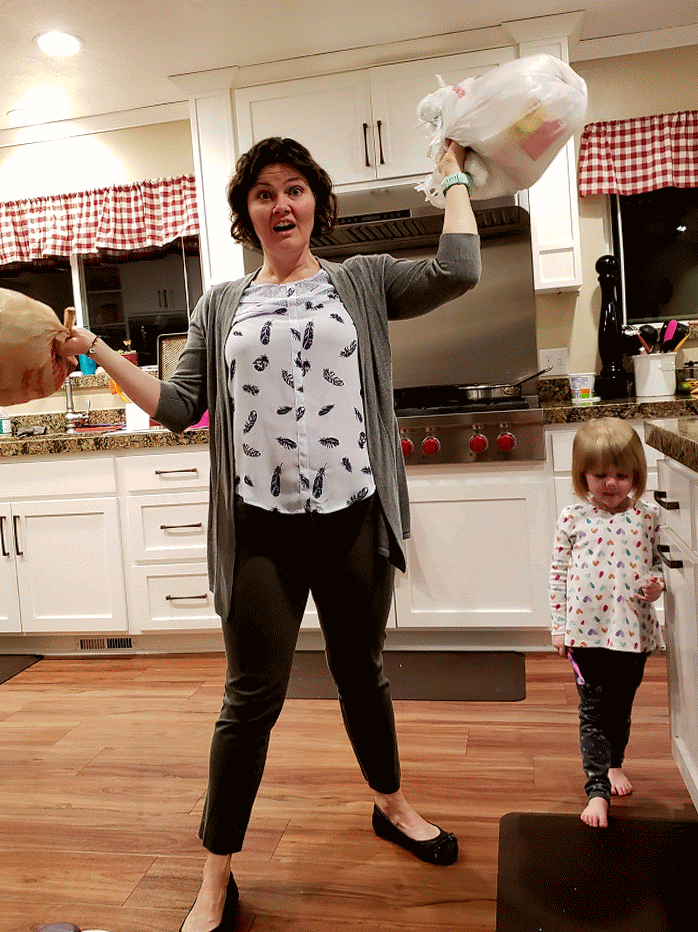Reducing plastic is all the rage, or at least it would seem. I see tons of people posting and talking about straws and plastic bags and bottles, but it doesn’t seem like much is being done. Plastic items are being consumed in businesses and supermarket shelves everywhere.
In our house, I am fully on board the “recycle everything we can” train. However, my husband only recycles or composts when I am watching, appeasing me. He claims that less than half of the items we toss in the recycle bin are recycled. Many products take more energy to recycle than to produce a new product. After looking into it, sadly, he was correct.
I was shocked to learn American companies shipped most of its waste to China until they restricted their standards in 2017. Now recycling is a non-regulated crap shoot based on market value: cost verse profit, business cycles, politics, laws, taxes, and is just waiting for more innovative solutions. There is no standardized waste stream from production to consumer garbage, to reuses — most of it goes to a landfill even when put in the recycling bin.
It seems we need to adjust our consumerism and reduce and reuse products. Relying on mass shifts in individual behavior to keep the recycling system on track will not solve the problem until we have a system that prevents hard to recycle products from being produced. Why are paper coffee cups lined with wax that prevents them from being recycled? Why are we using toxic dies that prevent the paper from being recycled? It’s complicated, even for seriously dedicated states like Oregon.
The only thing you can do right this moment is to limit your contribution, and the first step is to identify your contribution.
Take a moment to notice
After walking from my bathroom to the kitchen, it seems nearly impossible to eliminate plastic. I didn’t even make it out of my bedroom and noted hundreds of plastic items: cosmetic bottles, toothbrushes, laundry basket, hangers, and medicine bottles. The kitchen has even more items: utensils, straws, containers, plastic wrap, condiments, cutlery, water bottles, appliances, garbage bags, and the list goes on.
Life without plastic is unimaginable. Take a look around; plastic is everywhere. Tour your home and make a mental inventory of all the different types of plastic products. Check in the kitchen cabinets, refrigerator, laundry room, bathrooms, bedrooms, closets, and the garage. I guarantee you will be surprised at how many different types of plastic can you find in your house. What does your plastic products inventory look like?
Some of this plastic is designed for long term durability. Unfortunately, more than half of the plastic used in daily life is intended for one-time use. By merely adjusting how we consume can change the new normal of land-filling to something more sustainable.
What can we do? Start looking for plastic alternatives. When there’s no practical alternative to plastic, opt to recycle or repurpose instead of tossing in the trash.
Do your homework
When you opt for recycling, does it get recycled, or does it end up in the landfill? The answer is I don’t know its different for every city. Do some homework. Call and schedule a tour of the local waste facility, dump, or recycling center in your neck of the woods. Look at where the trash goes and how it is handled. Learn how to recycle and what type of materials can be recycled. How much plastic waste is collected each year?
A tour of not on your agenda? Start follow them on social media. I started tracking my local waste company, and they have a hilarious “how to recycle” campaign going. It’s not only entertaining but informative.
Be mindful of where you shop, vote with your dollars. Where do the plastic materials they collect go to be processed? Where are the products made? Look for nude companies that don’t wrap the produce in plastic or that have bulk bins and bring refillable containers.
Do what you love and win at life.
On our last family movie theater outing, I was surprised by the preparedness of the moviegoers. It was a weekend matinee, and almost every patron was loaded with a comfy blanket, a bucket, and two refillable mugs. The new theaters have oversized reclining seats with more room per individual and fewer chairs per theater. Quality over quantity is their business model. The concessions often add up to cost more than the movie tickets, but if you bring refillable containers, they give you a discount, and there is no trash at the end of every movie. The theater makes more money with less one-time use products and time spent cleaning after each film — a win for both the customer and the business owner — a happy ending in my book.
Watching people win at life, having fun doing what they love, and making it work for them inspired me to start thinking about the things we do for fun that become part of our routine. How often do you eat out, travel, or get a coffee before work? It made me take a look at all the byproducts that become part of the waste cycle when we partake in favored activities.
Check yourself
Last year I lived in a hotel for two months. I was shocked at how much waste was left at the end of every meal. Folks would use a fork for less than ten minutes, and then, in the trash, it would go. Some cities are making an effort to recycle, but this one recycling was not an option. The number of cups, straws, plates, and cutlery were overwhelming. I even talked with the members of my group, and they would agree that it was heartbreaking. Then they would turn around and toss all their garbage and go in with their day and do it again for lunch and not even think twice about it.
These folks are not bad people, but the situation was designed to make it easy for the consumer and the hotel at the cost of producing enormous amounts of preventable garbage daily. I made an effort to minimize my contribution to the mountain of trash and used the same fork and coffee mug the entire two months. It is the little things that add up and our compliance that perpetuates the cycle of land-filling.
Alternative products
Based on your inventory of plastic products in your life, are there any alternative materials you can use? What can your family do to reduce plastic waste? A perfect example is switching from plastic bags to reusable shopping bags.
For as long as I can remember, we have used grocery bags to line the bathroom garbage cans. When we started to use fabric shopping bags, plastic bags were no longer an option. I used the trash bin for its intended purpose without a plastic bag and dumped it when it was full. I didn’t miss the bag at all.
If you do use plastic, some grocery stores have a plastic bag recycling bin as you walk in the door. Look at your local grocery store, if not, ask the manager if they plan to get one or opt for paper or invest in some quality shopping bags or and produce bags. If you do use plastic, some grocery stores have a plastic bag recycling bin as you walk in the door.
Eliminating plastic is nearly impossible, but there are little things you can do to reduce the plastic you use. Simply using less of the products that produce plastic garbage or find alternatives.
~ Janine


